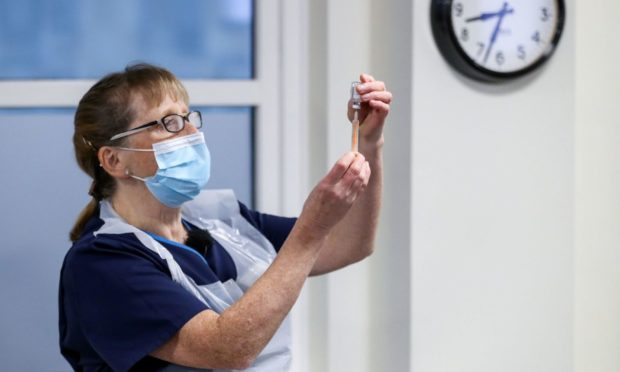Collecting more data on how vaccines are being distributed would slow the roll-out down, according to Scotland’s clinical director.
Professor Jason Leitch claimed the “burden of data collection” could stop a nurse meant to administer an inoculation from doing so, if they had to take details on who they were administering it to, how old they were, what priority group they were in and other pertinent information.
On Thursday the Office for Statistics Regulation (OSR) asked those responsible for data collection for further detail, including information on sex, age and ethnicity of the person being vaccinated, and what priority group they were in.
The Scottish Government does produce vaccine data on age range and sex.
In a letter to those producing the data, Ed Humpherson, director general for regulation at the OSR, said providing further statistics would benefit the clampdown on the virus in the long-run.
He said: “It is early in the implementation of the vaccination programmes and while it is encouraging to see the statistics available, it will be important that they evolve to more effectively monitor the vaccination programmes and help users assess whether governments are meeting the vaccination targets they set.”
Statisticians and data analysts last year asked for similar breakdowns in figures during the early days of the coronavirus pandemic.
Patients from ethnic minority backgrounds are “disproportionately” affected by Covid-19, figures show.
The OSR wrote to public health bodies requesting information in December last year.
Burden of data collection
Professor Leitch said the Scottish Government is producing statistics on vaccines.
He said: “We got the information from the statistics regulator yesterday, like the other four countries did.
“They have the aspiration for very detailed analysis of the vaccine data, but burden of data collection is a real thing.
“It takes longer to vaccinate if you have to collect more data, it is as straightforward as that.
“Now some of the data we do collect, we publish that weekly and the First Minister has given a commitment to look at the frequency and if we can do it more often, we will.
Coronavirus in Scotland – track the spread in these charts and maps
“We also now publish daily vaccination numbers, but the statistical regulator is taken very seriously by our chief statistician and our analysts and we will look to have as much data as we can without slowing down the vaccination programme.
“If you use a nurse to collect data you may not be able to use that nurse to vaccinate.”
When asked if the Scottish Government planned on collating and releasing the requested information, deputy first minister John Swinney said: “We are publishing information on a daily basis on the number of people being vaccinated… the information for Thursday is 334,871 have had the first dose, the increase in pace is really encouraging.
“I am struck by the fact on the latest data, from Public Health Scotland up to January 17, there were 240,487 people vaccinated. So in three days 94,384 people have been vaccinated, which is a really good increase in the tempo of vaccination.
“We publish that data and obviously we are working through a limited number of categories just now.
“We are going through care home staff and residents, health and social care workers and the over 80s. As time goes on there will be other categories dealt with and we will, no doubt, release these statistics to the public.”


